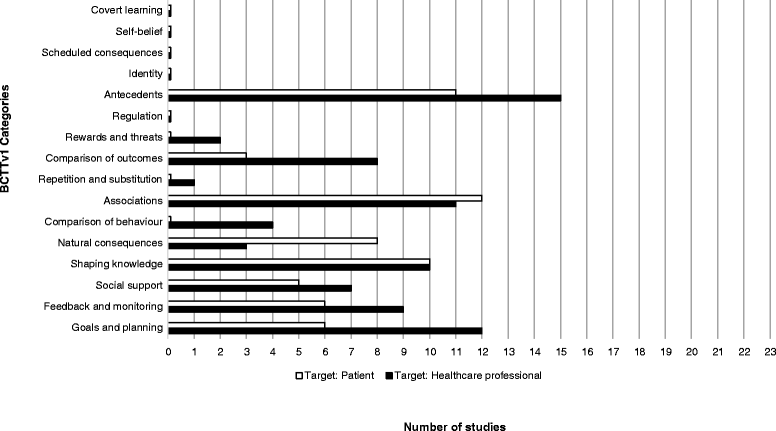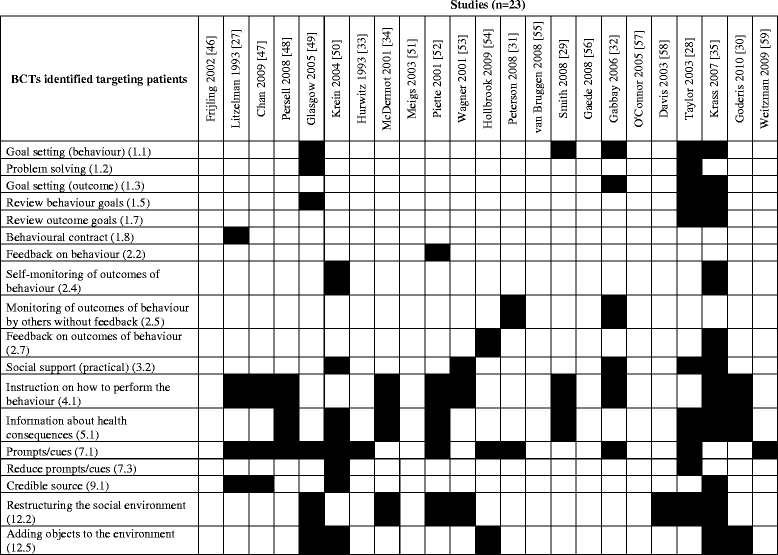Using a behaviour change techniques taxonomy to identify active ingredients within trials of implementation interventions for diabetes care
- PMID: 25900104
- PMCID: PMC4438476
- DOI: 10.1186/s13012-015-0248-7
Using a behaviour change techniques taxonomy to identify active ingredients within trials of implementation interventions for diabetes care
Abstract
Background: Methodological guidelines for intervention reporting emphasise describing intervention content in detail. Despite this, systematic reviews of quality improvement (QI) implementation interventions continue to be limited by a lack of clarity and detail regarding the intervention content being evaluated. We aimed to apply the recently developed Behaviour Change Techniques Taxonomy version 1 (BCTTv1) to trials of implementation interventions for managing diabetes to assess the capacity and utility of this taxonomy for characterising active ingredients.
Methods: Three psychologists independently coded a random sample of 23 trials of healthcare system, provider- and/or patient-focused implementation interventions from a systematic review that included 142 such studies. Intervention content was coded using the BCTTv1, which describes 93 behaviour change techniques (BCTs) grouped within 16 categories. We supplemented the generic coding instructions within the BCTTv1 with decision rules and examples from this literature.
Results: Less than a quarter of possible BCTs within the BCTTv1 were identified. For implementation interventions targeting providers, the most commonly identified BCTs included the following: adding objects to the environment, prompts/cues, instruction on how to perform the behaviour, credible source, goal setting (outcome), feedback on outcome of behaviour, and social support (practical). For implementation interventions also targeting patients, the most commonly identified BCTs included the following: prompts/cues, instruction on how to perform the behaviour, information about health consequences, restructuring the social environment, adding objects to the environment, social support (practical), and goal setting (behaviour). The BCTTv1 mapped well onto implementation interventions directly targeting clinicians and patients and could also be used to examine the impact of system-level interventions on clinician and patient behaviour.
Conclusions: The BCTTv1 can be used to characterise the active ingredients in trials of implementation interventions and provides specificity of content beyond what is given by broader intervention labels. Identification of BCTs may provide a more helpful means of accumulating knowledge on the content used in trials of implementation interventions, which may help to better inform replication efforts. In addition, prospective use of a behaviour change techniques taxonomy for developing and reporting intervention content would further aid in building a cumulative science of effective implementation interventions.
Figures
References
Publication types
MeSH terms
Grants and funding
LinkOut - more resources
Full Text Sources
Other Literature Sources
Medical




